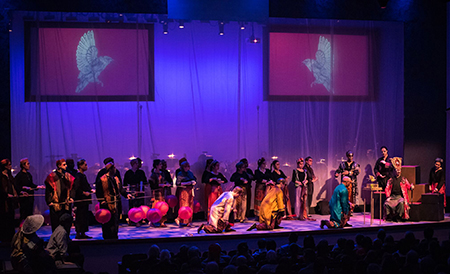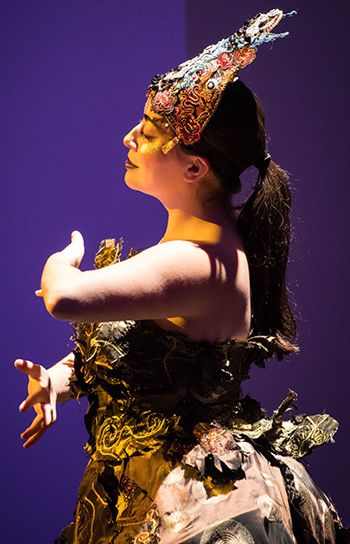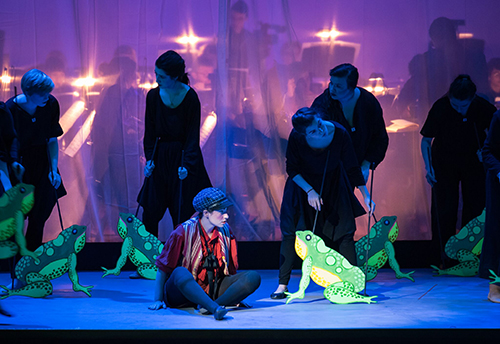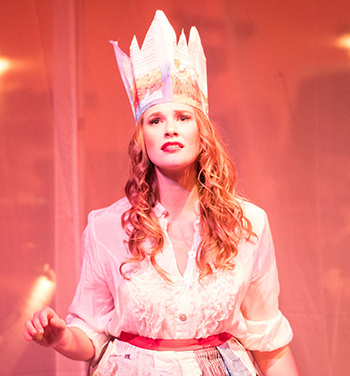by Timothy Robson

Stravinsky began composition of Le Rossignol, based on Hans Christian Andersen’s fairy tale “The Nightingale,” in 1907. He took a multi-year pause to compose Petrushka and Le sacre du printemps for Sergei Diaghilev’s Ballets Russes before completing Le Rossignol in 1914. It would be performed that same year in Paris, in a production with the singers in the orchestra pit and actions mimed on stage.

CIM performed Le Rossignol in French, with English supertitles. For the first ten minutes, it was not clear what language was being sung — the diction was too mushy. That continued to be a problem in both the Stravinsky and Ravel works. Both Rossignol and L’enfant have huge casts. The principals were double-cast; I saw the first cast on Wednesday evening.
In Rossignol, The Fisherman, who acts as a kind of Greek chorus marking “paragraphs” in the action, was sung by tenor Giwoong Kim, who has a baritonal richness to his voice. Baritone Xiaoyang Zhang brought dignity to the part of The Emperor, whose actions catalyze the story. Mezzo-soprano Brianna Nemback and baritone Daniel Fridley kept the action moving as The Cook and The Chamberlain. But pride of place goes to soprano Siyeon Kim, who sang the immensely difficult role of The Nightingale. She brought impeccable phrasing and intonation to flights of coloratura far above the staff. The chorus, who were very busy portraying townspeople, courtiers, and the like, were well-prepared musically and moved effectively onstage.


There was not a weak link in the cast. Mezzo Polina Davydov was convincing as The Boy, singing with both impudence and, especially at the end, tenderness. Several of the leading singers in Rossignol had small parts in L’enfant, notably Siyeon Kim, who returned in a much shorter, but equally virtuosic role as The Nightingale in the Ravel. The male and female cats (Austin Cale Cox and Liza Moss) were hilarious in their antics. The Little Old Man, as sung by Benjamin Liu, was like a crazy, absent-minded professor.

Published on ClevelandClassical.com November 20, 2018.
Click here for a printable copy of this article




